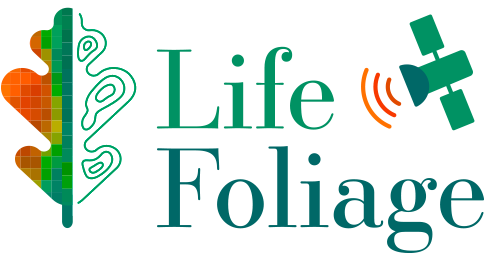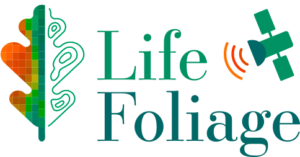Forest Management Platform
“The Forest Management Platform (FMP) is the hub of administrative procedures for logging interventions and forest planning. All forestry applications are managed by the FMP: communication of forest cutting, thinning, conversion of a form of government, forest cutting projects, forest management plans and any other instance in which the cutting of forest stands is planned or requested.”
FMP users are forest owners / managers, freelancers, law enforcement agencies, public administration and other entities involved in issuing permits.
Registration with the FMP requires an accreditation procedure in which to declare the requirements shown in table 2. The data entered by the user are therefore associated with the Public Digital Identity System (SPID) with which the user can log in.
Table 2. accreditation requirement
The FMP allows you to create online all the documentation necessary to submit a forestry application: forms in digital format and a webgis to create the cartography. Access to the FMP is guaranteed through the use of the most common web browsers: Firefox, Microsoft Edge, Google Chrome.
Forest owners / managers can enter their own logging communications in person or be supported by the competent bodies. The bodies responsible for supporting the submission of logging communications have yet to be formally defined. In the first hypothesis these entities could be: in Umbria, the Regional Forest Agency and in Lazio the Municipalities. Professionals are enabled, according to their skills, to insert all the more complex forestry issues of forest cutting communications. In addition to the forms in electronic format, professionals have at their disposal a webgis interface with which to create the necessary cartography. The webgis contains the information layers necessary to carry out the localization of the interventions and the cartographic representations (eg table 3).
Table 3.Example of different layer present on the platform
In addition to what is reported in Table 3, all cartographies, if they are digital and georeferenced, are available to: 1) carry out the geographical, climatic, geopedological and vegetation frame, 2) evaluate the hydrogeological risk, 3) frame the environmental emergencies, 4) evaluate the landscape constraints. To this end, the Regions will establish agreements with the competent bodies (eg. Basin Authority) to ensure that the information layers are always updated.
Professionals can also upload geo-referenced information layers (eg.: shapefiles, cadastral maps of the portal SISTER).
The webgis is complete with all the tools to create and represent vectorial information layers (eg. forest roads, forest plots, areas of intervention, location of test areas).
The projects made by professionals are saved automatically and at their request to record the information entered in the electronic forms and projects made in the webgis.
When the professional has completed the forestry application and wants to submit it to the competent bodies to begin the process of authorization/approval, it is required to affix the digital signature on the project documentation. The project documentation is then associated with a unique digital identifier, as a reference for the interlocution between the various actors of the administrative procedure. The documentation produced is then made non-modifiable pending the opinion of the competent bodies. This non-modifiable version remains registered in the Foliage database and officially becomes part of the administrative file. In case of a request for integrations by the competent body, an editable copy of the documentation is made available to the user, in order to formulate his comments.
Professionals in charge of managing silvicultural works have access to all the documentation produced for the forestry application through the FMP and the Forest Survey and Information Platform (PRIF). The director of works can enter the minutes of the field inspections and the test reports of the works carried out on the FMP.
The documentation produced and the relevant opinions/authorizations issued by the competent bodies can be viewed online and downloaded in Portable Document Format (PDF). The cartography produced is downloadable both in PDF format and as geo-referenced information layer (eg. shapefile).
The exchange of information between the professional and the competent authorities, in addition to the FMP, will also be kept via e-mail correspondence. For example, automatic alerts will be sent at each key step in the administrative process: eg. submission of an application, verification of the application, issuance of the clearance, any requests for integration received from the PA. Automatic notifications could also be triggered for the following categories:
- PA can be notified for assignment of administrative procedures and related deadlines;
- law enforcement agencies may be notified of the start and end of forestry work.
The bodies responsible for assessing forestry applications (ie. Regions, Provinces and Municipalities in Lazio, and Regional Forestry Authority in Umbria) and for the issuance of permits (eg. National Parks) can view the documentation produced by the professional both in PDF format and via web/webgis interface to make the necessary comments through electronic forms. During the evaluation process, the comments in the forms and webgis projects are saved automatically and at the request of the user. The person in charge of following the administrative process of the forestry application will then be able to formalize his observations by affixing the digital signature.
Law enforcement agencies are accredited users of the FMP in order to carry out verifications and plan their field activities. Law enforcement agencies can enter reports of field inspections through FMP and these will be officially communicated to both the professional and the PA.
The most important information layers produced by professionals (eg. geographic framing of the intervention) are visible on the PRIF to authorized users for the evaluation of administrative processes, to law enforcement and to the professionals themselves. The visibility of these information layers will also be ensured to professionals during the preparation of the forestry application.
Any observations made in the field by professionals, agencies responsible for evaluating forestry applications and law enforcement agencies, which have been recorded through the PRIF, will be reported automatically and georeferenced on the FMP.
The way the data contained in the FMP will be managed, privacy and user authorization level will be presented, discussed and refined during meetings with stakeholders. This information will feed into a data management plan that will be made public by September 2021.
The terminology used to define and detail forestry interventions will be agreed between the Partner Regions and LIFE FOLIAGE stakeholders, also based on a participatory process involving all stakeholders (eg. professionals). The terminology adopted for the FMP will be formalized in a special glossary and compared with the one used by Partner Regions and LIFE FOLIAGE Stakeholders.

